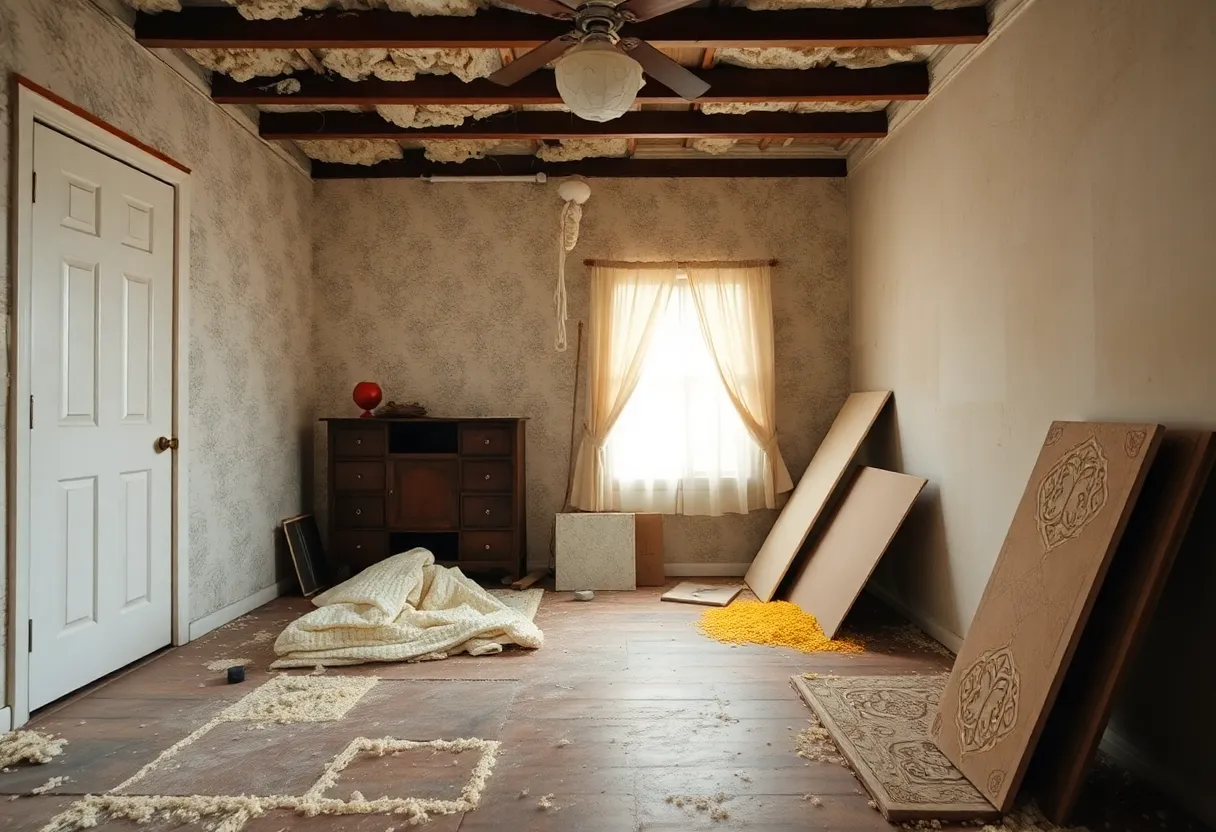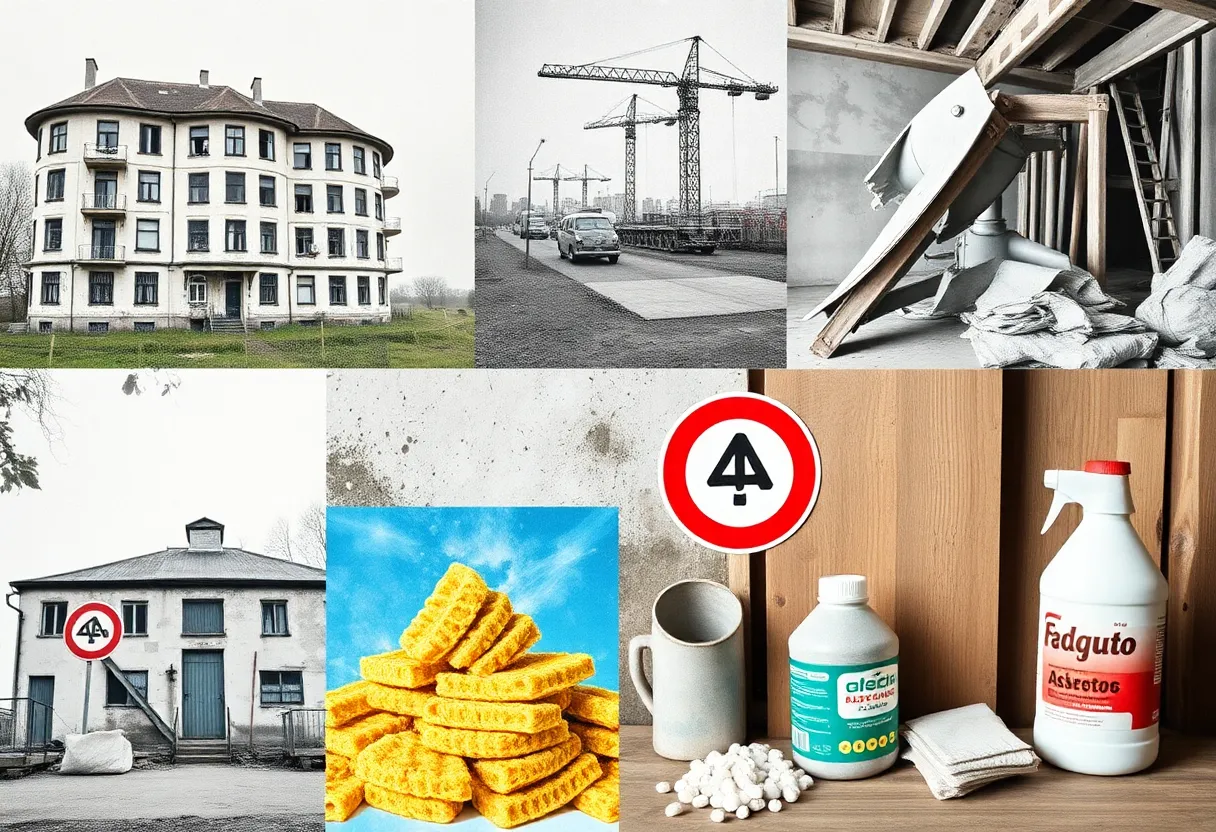News Summary
Australia faces a dire public health emergency as asbestos-related diseases claim thousands of lives annually, with ongoing contamination issues exacerbating risks.
The Ongoing Asbestos Crisis in Australia: A Public Health Emergency
As the specter of asbestos-related diseases looms heavily over Australia, a critical public health crisis continues to unfold, claiming the lives of approximately 4,000 Australians annually. With asbestos still present in millions of properties, particularly in homes built or renovated before 1990, awareness and safety precautions have never been more vital. Despite known risks, many unsuspecting homeowners are unwittingly exposing themselves to this dangerous material during routine maintenance or renovations.
Where is Asbestos Hiding?
Asbestos can frequently be found lurking in wetted areas of the home, including bathrooms, kitchens, and laundries. It resides in various materials such as cement sheeting, vinyl flooring, adhesives, paints, textured coatings, and insulation. The problem escalates when homeowners undertake renovations without properly identifying and mitigating these potential hazards. Disturbing asbestos-containing materials can easily release hazardous fibers into the air, posing serious health risks.
Taking Action for Safety
To safeguard the public from the threats posed by asbestos, it is crucial to plan home renovations strategically. Homeowners should begin by identifying potential asbestos locations prior to any work being conducted. If there is uncertainty about the presence of asbestos, consulting with licensed asbestos professionals is imperative for proper assessment and removal recommendations. A proactive approach can significantly reduce the risks associated with asbestos exposure.
Community Initiatives: Fighting Against Asbestos
Programs like the subsidized asbestos testing kits in Northern Rivers are shining lights amid the crisis. These kits provide residents with comprehensive instructions on safely taking samples of suspected materials and sending them to certified laboratories for analysis. Results are communicated conveniently via email, allowing for timely management of any identified threats.
The Mulch Contamination Crisis
Compounding the asbestos issue, New South Wales (NSW) is currently embroiled in a significant mulch contamination crisis. Asbestos-contaminated mulch has inadvertently made its way into schools, parks, and hospitals, sparking public outcry and extensive investigations. The crisis surfaced after a child brought home bonded asbestos material from a playground, prompting Australian authorities to examine over 61 sites for contamination. This ongoing investigation is one of the largest in history, with over 130 investigators tracking the origins of the asbestos-laden mulch.
The Persistent Legacy of Asbestos
While Australia banned the use of asbestos in 2003, the long-lasting effects of its proliferation remain a public health concern. Each year, about 700 new cases of mesothelioma, a cancer linked directly to asbestos exposure, are diagnosed in the country. The lag time between exposure to asbestos and the onset of illness—ranging from 10 to 70 years—adds a layer of complexity to tracing and addressing these health issues.
Regulations and Challenges
Current regulations stipulate that specialized removal procedures are required for asbestos areas that exceed 10 square meters. However, high removal costs and constrained access to those services may deter homeowners from safeguarding against this potentially deadly threat. Furthermore, the risk of developing asbestos-related diseases correlates with several factors, including the amount inhaled, the type of asbestos, and the duration of exposure.
Looking Ahead
As investigations into recent asbestos exposures in NSW continue, the long-term public health implications remain uncertain. The community must stay informed about the risks associated with asbestos, ensuring that proper measures are taken to protect themselves and their families. The plight of those affected by asbestos is a stark reminder of the material’s deadly legacy and the responsibility of every Australian to prioritize safety carefully.
For further information on how to manage potential asbestos threats safely, residents are encouraged to reach out to local councils and utilize resources such as the Australian Mesothelioma Registry and the Asbestos Exposure Register.
Deeper Dive: News & Info About This Topic
HERE Resources
Flood at Ballston Spa Public Library Uncovers Asbestos, Closure Extended
Shocking Reality: The Hidden Dangers of Asbestos and Mesothelioma
Asbestos Crisis Emerges in Gaza Amid Ongoing Conflict
Breakthrough Drug Shows Promise Against Mesothelioma
Breakthrough in Mesothelioma Treatment: Portage Biotech’s PORT-7 Shows Promise
Breakthrough Drug Offers New Hope for Mesothelioma Patients
Revolutionary Treatment for Malignant Pleural Mesothelioma Approved in Canada
Hope Surfaces for Mesothelioma Patients as Innovative Trial Yields Promising Results
Tragic Death of 85-Year-Old Woman Linked to Asbestos Exposure
Sheffield Community Grapples with Unfolding Tragedies



















